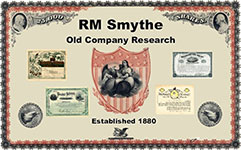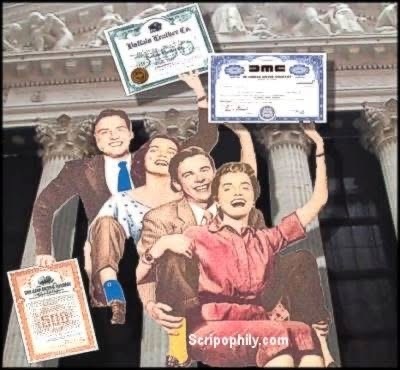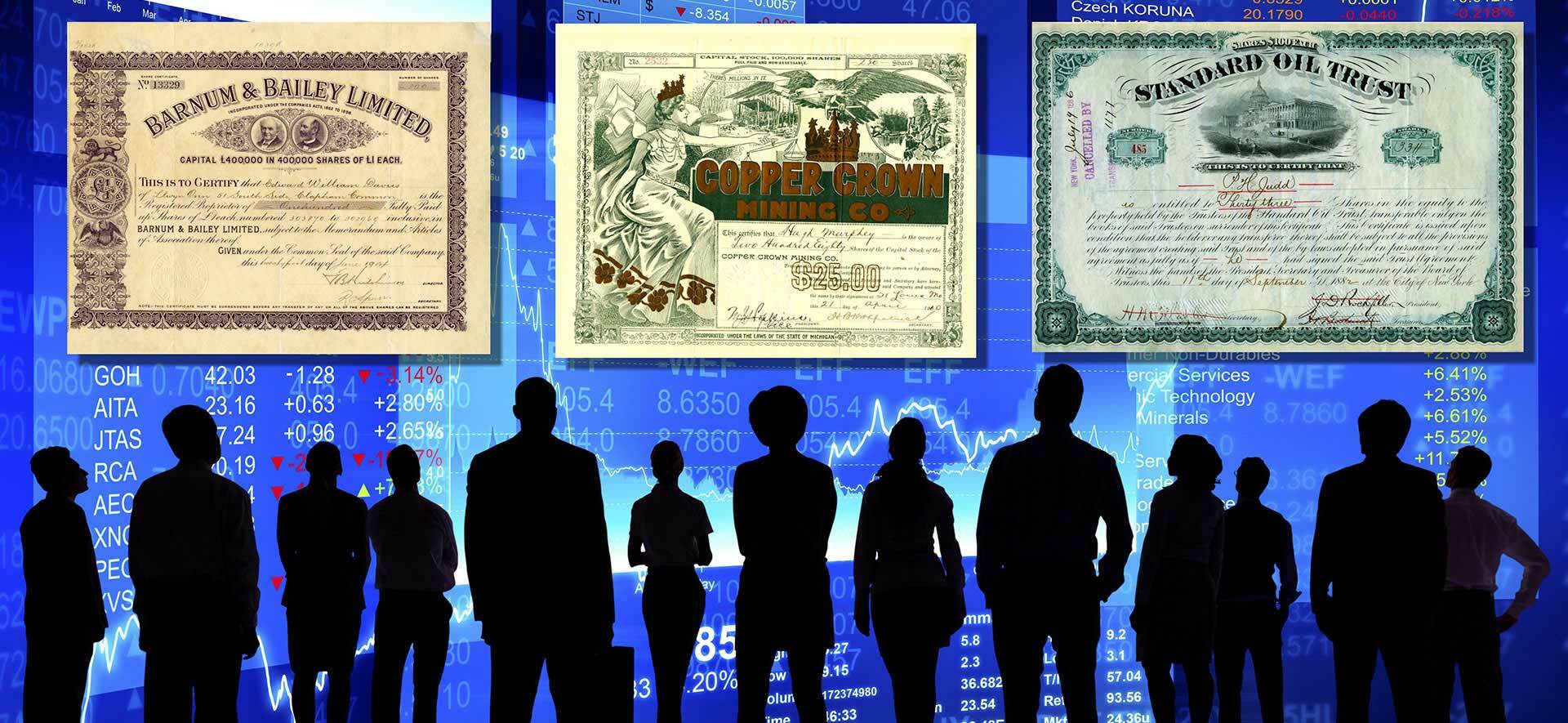Beautifully engraved certificate from the Stardust. Inc. Trustees Participation Certificate issued in 1958. This historic document has an ornate border around it. This item has the printed signatures of the Trustee for Stardust, Inc. Tony Cornero organized the Stardust Company in 1954. His strategy was to get away from the elegance of the Desert Inn and Sands. He wanted to attract visitors in masses, not just the sophisticated and high rollers. He decided that by charging $5.00 a day for rooms and giving guests $5.00 for gambling, he could turn a profit. Hundreds of shares were sold in the company. The new resort was to be called "Tony Cornero's Starlight" and have its own train stop on the Union Pacific track bordering its rear property line but the train station never materialized. Cornero envisioned a casino resort that would be the largest in the world with over 1,000 rooms. The plans called for separate bungalow-type sections with each section being named after the planets and a super-motor scooter was to be used to carry guests and tourists around the 40 acre resort. In July of 1955, Cornero suffered a massive heart attack and died while gambling at the Desert Inn. The unfinished shell sat empty almost two years while the asking price came down. Moe Dalitz, Allard Roen and their Desert Inn associates took over the Stardust operation for financial backer Jack "The Barber" Factor, with the owner listed as Rella Factor (Jack's wife), for $4.3 million on January 10, 1958. The architecture of the partially completed hotel was chaotic. No one was in clear command. The design was a collection of individual functions without an overall concept or image. The main building was tilt-up concrete walls, covered with wood roofs, a favored method for warehouse and industrial buildings, buildings designed without architects. The two-story motel wings were post-tensioned concrete slab structures. The already built casino ceiling did not allow for an attic story for surveillance of the gaming tables. Stockholders/creditors squabbled over funds in Federal Bankruptcy Court. A creditor's committee moved in, throwing the corporation into reorganization proceedings under the National Bankruptcy Act. U.S. District Judge John R. Ross approved the sale of the Stardust to Rella Factor, wife of Jack Factor. At 12:00pm on July 2, 1958, Tony Cornero's dream became a $10 million, 1065 room reality with what was architecturally little more than a warehouse, charging just $6.00 a day. The resort contained the Big Dipper swimming pool measuring 105 feet in length, a 13,500 square foot lobby, 16,500 square foot casino, and a decor featuring rich red and deep brown colors and indirect lighting. The attendees of the opening included Governors, Senators, city and county officials and Hollywood celebrities. The entertainment registry started with the spectacular French production "Lido de Paris". Lido was conceived by Pierre-Louis Guerin & Rene Fraday, and staged by Donn Arden. The opening night lounge lineup offered, from dusk to dawn, Billy Daniels, The Happy Jesters, The Vera Cruz Boys and the Jack Martin Quartet. Daniels became the first entertainer to sign a long-term residency contract in Las Vegas when he agreed to appear for 40 weeks per year for three years. The Stardust turned its sign into its architecture establishing an unconventional, but effective response to the Strip. The Stardust was the first Strip hotel to not include the prestigious circle drive, spacious lawn and burbling fountain. Its architecture was a billboard that advertised nothing less than the universe itself. The challenge of the Stardust's sign was the night sky and the vast desert. They could hide a low sprawl of motel wings without a trace. The sign had to stand out. The Stardust was already partially built when Young Electric Sign Company was hired to fabricate the sign. Kermit Wayne's design was selected for both the façade and the roadside signs. Although Dalitz said it was from his original plans, the sign was really part of Cornero's original concept. The Stardust gave visitors a panorama view of the solar system that exploded beyond the edges of the building. At the sign's center sat a plastic earth which was 16 feet in diameter, formed in slices three feet across, taken from the Sputnik which was off the front pages of the newspaper. Cosmic rays of neon and electric light bulbs pulled out from behind the earth in all direction. Three-dimensional plexiglass planets spun alongside 20 scintillating neon starbursts. Across the universe was a jagged galaxy of electric lettering spelling out "Stardust". The sign utilized 7,100 feet of neon tubing with over 11,000 bulbs along its 216 foot front. The "S" alone contained 975 lamps. At night the neon constellation was reportedly visible 60 miles away. The roadside sign was freestanding with a circle constraining an amorphous cloud of cosmic dust circled by an orbit ring and covered in dancing stars. The hotel's name was nestled in a galactic cloud. Subsidiary signs marked out the domain of the Stardust at secondary entrances. Lacking the Desert Inn's lawn and fountain, or the Riviera's dramatic front drive, the front of the Stardust was a parking lot with a sign. The Stardust also conveniently held Las Vegas' only first run a drive-in theatre in the rear of the resort. The Stardust took over the closed Royal Nevada, and remodeled the showroom and made it the coliseum,/exhibition/auditorium/convention center. A half circle was added to the Royal Nevada's roofline but the fountain of neon tubing marking the entry was saved. With the addition of the Royal Nevada, the Stardust boasted 1,300 rooms. An impressive archway and an elaborate Polynesian restaurant, Aku Aku, joined the old Royal Nevada which was called Stardust South. In 1960, the resort added a new 4,800 square foot screen surface to its drive-in theatre. They also installed a new speaker system which carried practically stereophonic type sound. By 1961, Stardust's management included Credit Manager Hy Goldbaum, listing seven aliases, had 14 convictions, including one for assault, and had received a three-year sentence for income tax invasion. Casino Manager and 5% owner Johnny Drew, was a veteran associate of Al Capone and was once fined for running a crooked dice game at an Elks convention, and Morris Kleinman who was part of the general management team, had served three years for tax evasion. In 1964, the Stardust added a nine-story tower, bringing the room count to 1,470. The Stardust was the leader in rooms until 1969 when the International opened. At this time it also remodeled its landmark façade, expanding out into the parking lot by the highway. The new façade raised the Stardust's name, still in electra-jag letters, onto a pole above the exploding universe. In 1965, a new roadside sign replaced the old circular sign at a cost of $500,000. Its form was blurred by a scatter of star shapes, a shower of stardust. At night, incorporating neon and incandescent bulbs in the animation sequence, light fell from the stars, sprinkling from the top of the 188 foot tall sign down over the Stardust name, igniting a frenzy and then snowing down onto the fortunate people below. In 1966, Howard Hughes attempted to buy the Stardust for $30.5 million but the antitrust division blocked his takeover on the grounds that his acquisition of any more gambling resorts might violate the Sherman Antitrust Act. In November of 1969, Parvin-Dohrmann Corporation purchased the Stardust for an undisclosed amount. In 1977, the Stardust went through another remodeling. The galactic theme was abandoned, though the roadside sign remained, and the façade was covered with animated neon tubing and trimmed with mirrored finish facets. The new porte cochere sparkled with 1,000 small incandescent bulbs. The encrustation of bulbs turned solid mass into ethereal form. In 1984, Nevada Gaming Commission gave the highest fine ever issued in Nevada with the $3 million fine against the resort for skimming. Suspicions, accusations and controversy about the Stardust's mob owners over the years were finally squelched when Sam Boyd purchased the Stardust in March of 1985. In 1991, a subdued Helvetica typeface replaced the Stardust sign's Jetsonian lettering. The oasis accented by fountains of neon has become a walled city of red, blue, and green tower illuminated by spotlight. Now the Stardust contains 100,000 square feet of gambling casino including 73 gaming tables, and 1,950 slot, keno and video poker machines. As the last resort built in the 50s, it has updated itself costing $300 million to include 2,100 guest rooms and two landscaped swimming pools, golf, and an athletic facilities. The conference center is now 25,000 square feet and can accommodate meetings and banquets for groups of 25 to 2,000. Lido de Paris was replaced in 1992 with Enter the Night which closed in 1999. In October of 1999, 57 year old Wayne Newton signed the biggest entertainment deal in Las Vegas history performing exclusively at the Stardust 40 weeks per year at approximately $25 million per in the 920-seat Stardust Theater, renamed the Wayne Newton Theater. History from Las Vegas History Website.
Stardust Hotel of Las Vegas, Nevada -Trustees Participation Certificate 1958
MSRP:
$395.00
$295.00
(You save
$100.00
)
- SKU:
- starhotoflas
- Gift wrapping:
- Options available in Checkout










